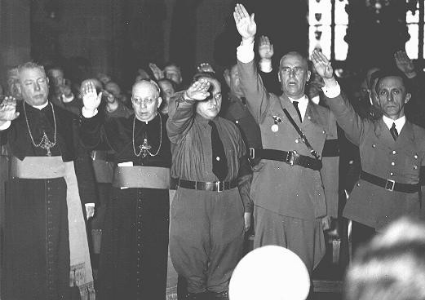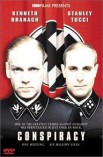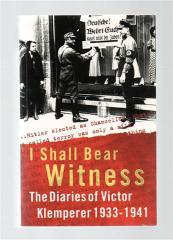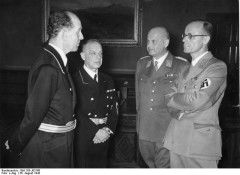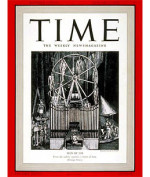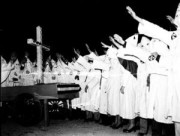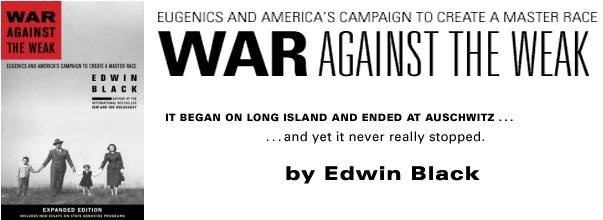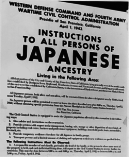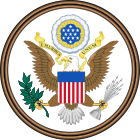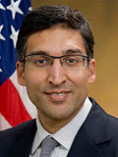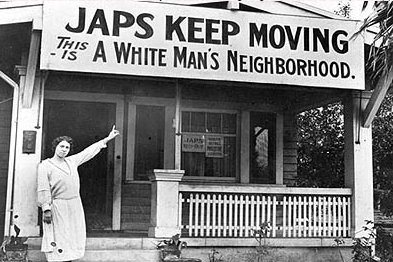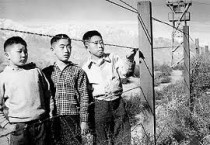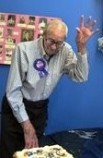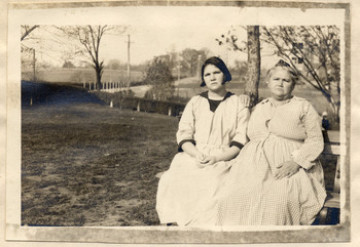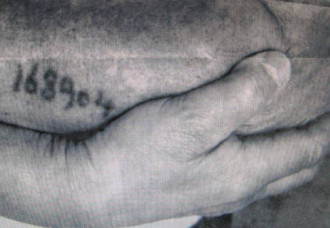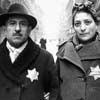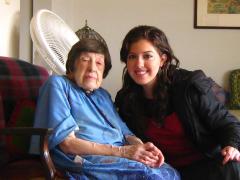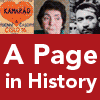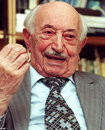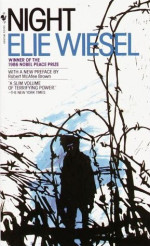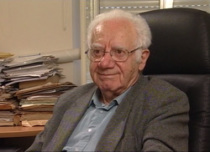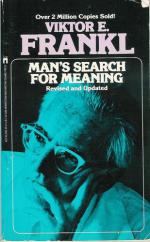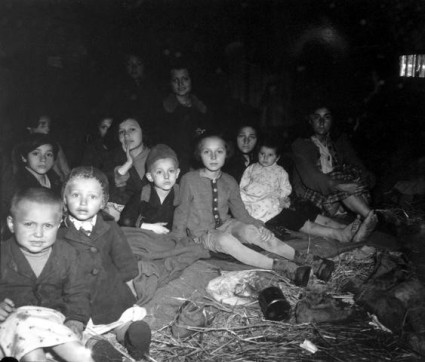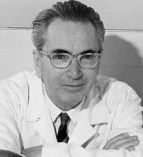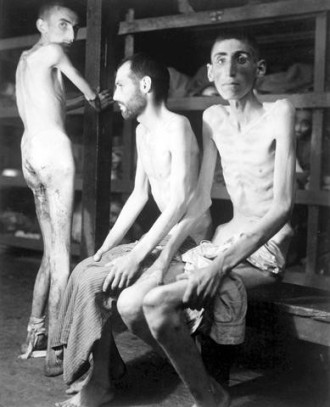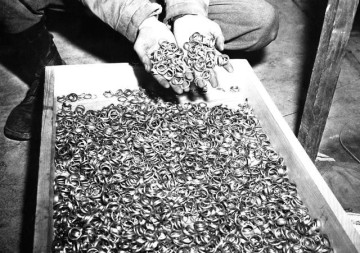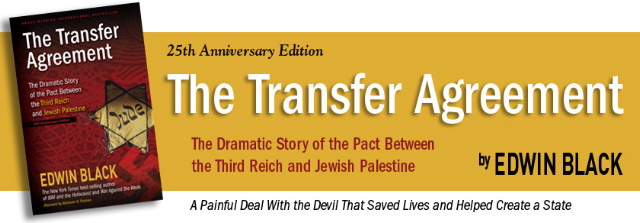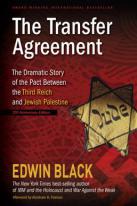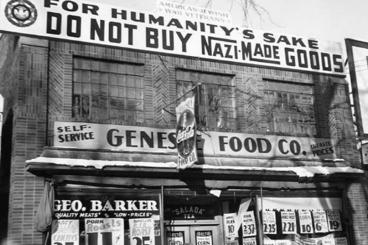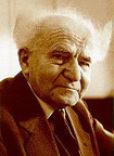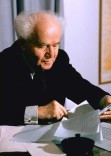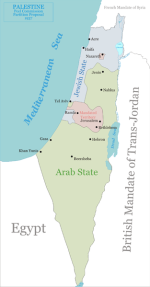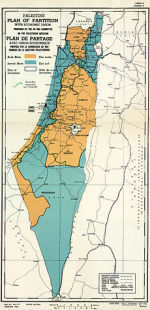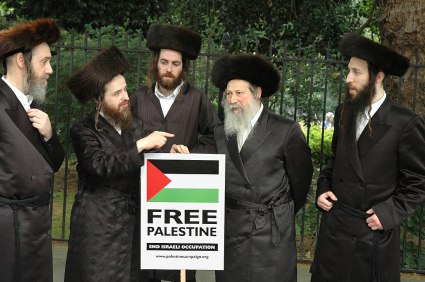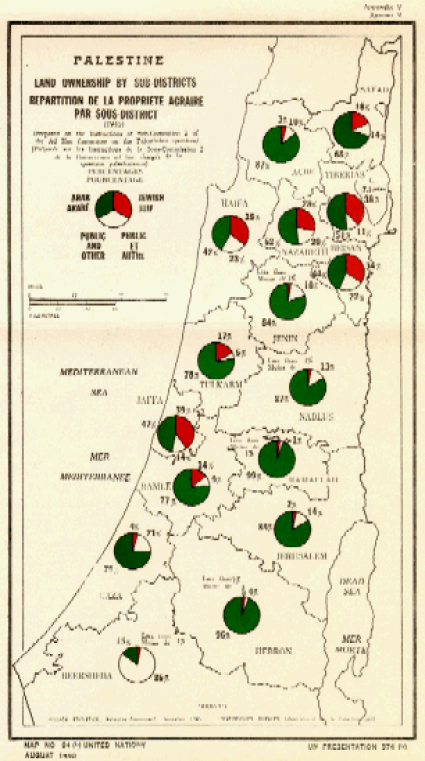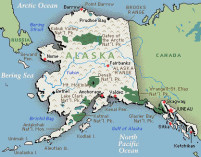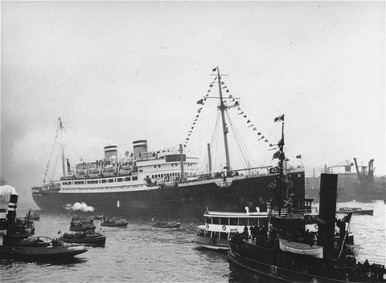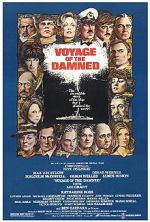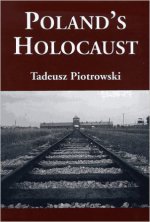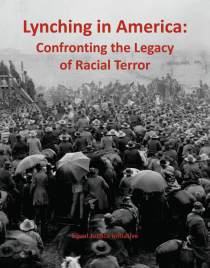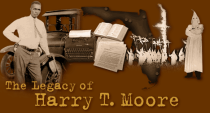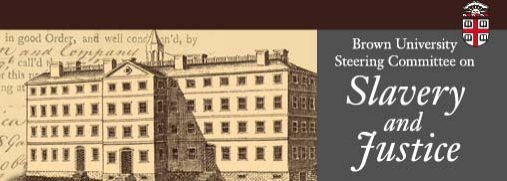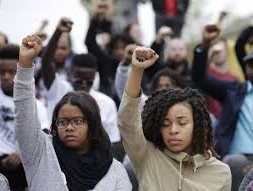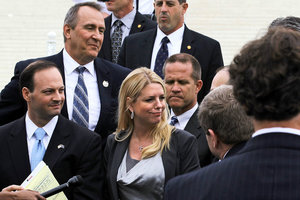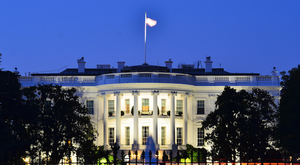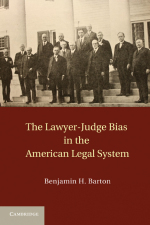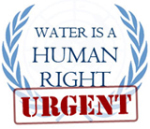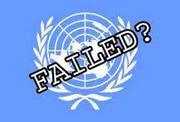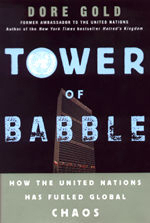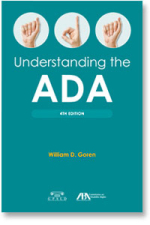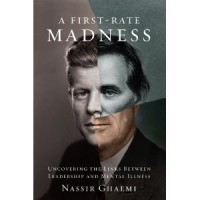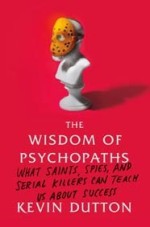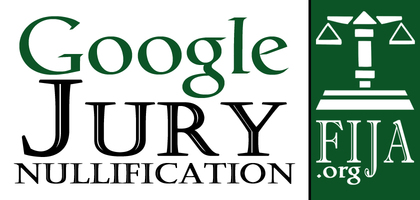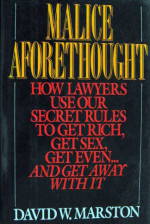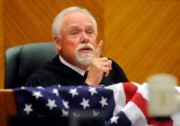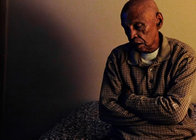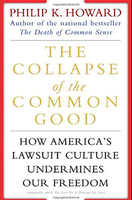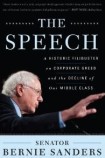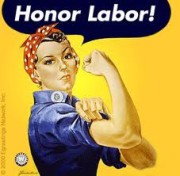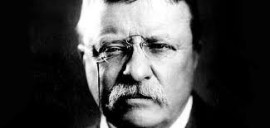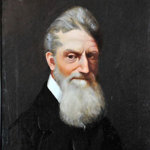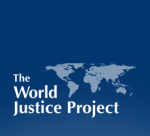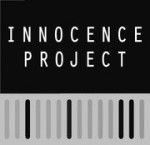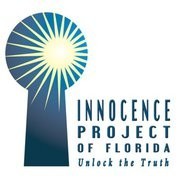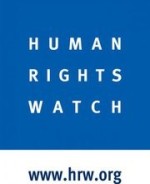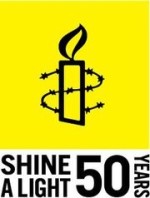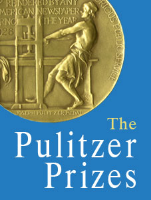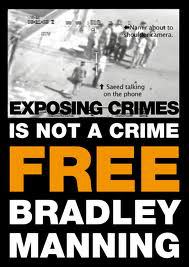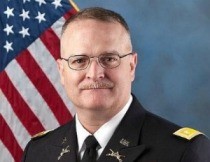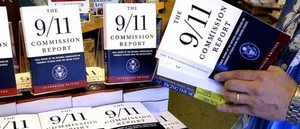.....The Holocaust: Role of German and American Law....
.
Catholic Church and Nazi Germany
Wikipedia
Fritz Gerlich (l.) editor of Munich's Catholic weekly. After the Nazis seized power on 30 January 1933, Gerlich was arrested March 9, 1933 and held at the Dachau concentration camp, where he died on 30 June 1934 during the Night of the Long Knives. The Catholic press was muzzled in Nazi Germany.
Popes Pius XI (1922-39) and Pius XII (1939-1958) led the Roman Catholic Church through the rise and fall of Nazi Germany. Around a third of Germans were Catholic in the 1930s. The Church in Germany had spoken against the rise of Nazism, but the Catholic aligned Centre Party capitulated in 1933 and was banned. Several key Nazis, including Hitler had been raised Catholic, but became hostile to the Church in adulthood. While Article 24 of the NSDAP party platform called for conditional toleration of Christian denominations and the 1933 Reichskonkordat treaty with the Vatican purported to guarantee religious freedom for Catholics, the Nazis were essentially hostile to Christianity and the Catholic Church faced persecution in Nazi Germany. Its press, schools and youth organisations were closed, much property confiscated and around one third of its clergy faced reprisals from authorities. Catholic lay leaders were targeted in the Night of the Long Knives purge. The Church hierarchy attempted to co-operate with the new government, but in 1937, the Papal Encyclical ‘’Mit brennender Sorge’’ accused the regime of "fundamental hostility" to the church.
Read more Wikipedia, Catholic Church and Nazi Germany
Trailer for the BBC/HBO production of Conspiracy staring Kenneth Branagh. Note Branagh’s opening statement:
"Today each of us becomes a bearer of secrets"
On January 20, 1942, 15 high-ranking Nazi Party and German government officials gathered at a villa in the Berlin suburb of Wannsee to discuss and coordinate the implementation of what they called the "Final Solution of the Jewish Question."
Conspiracy is a BBC/HBO television film which dramatizes the duplicity of the mis-rule of law in The Holocaust. But Nazi lawyers like Wilhelm Frick, Hans Globke, and Wilhelm Stuckart are largely unknown today for their role in making and passing laws that led to The Final Solution.
Wikipedia: The film delves into the psychology of Nazi officials involved in the "Final Solution of the Jewish Question" during World War II.
- BBC Press Release - Conspiracy
- Review by Alan E. Steinweis, U. Nebraska, Lincoln (PDF)
Link to "Die Wannsee Conference" (1984) - German language film about the Wannsee Conference, by LionHeart FilmWorks.
......................................Misrule of Law......................................
The Nazis advocated Aryan white supremacy and anti-Semitism.
Nazi lawyer Wilhelm Frick and his colleagues created the Final Solution through the misrule of law and official Nazi policy.
In 1933 the Law for the Restoration of the Professional Civil Service banned Jews from government jobs.
Other laws followed, including the,
- Nuremberg Laws
- Law for the Protection of German Blood and German Honour
- and the Reich Citizenship Law
......................................LAW not WAR......................................
Rule Of Law - ROL
Ben Ferencz (March 11, 1920 – April 7, 2023) was the last living U.S. prosecutor at the Nuremberg Trials of nazis after WWII. Ferencz is hailed as the founding father of the International Criminal Court (ICC) (ICC Wikipedia). His vision of "Law Not War" remains unfulfilled as long as his own country, the United States, refuses to recognize the jurisdiction of the ICC or The Rome Statute (PDF). See The Atlantic, The Last Man at Nuremberg
A Plea for Humanity: The Einsatzgruppen on Trial
More on the Rule of Law in the tab After The Holocaust on the left.
Donald Trump and the ICC (Wikipedia)
In September 2018, President Donald Trump criticized the Court before the United Nations.[46] In his speech condemning globalism and the over reach of international agencies, he drew parallels between the court and the United Nations Human Rights Council.[47]
"So the United States took the only responsible course: We withdrew from the Human Rights Council, and we will not return until real reform is enacted. For similar reasons, the United States will provide no support in recognition to the International Criminal Court. As far as America is concerned, the ICC has no jurisdiction, no legitimacy, and no authority. The ICC claims near-universal jurisdiction over the citizens of every country, violating all principles of justice, fairness, and due process. We will never surrender America’s sovereignty to an unelected, unaccountable, global bureaucracy."
In April 2019, the United States revoked the visa of the Prosecutor of the International Criminal Court, Fatou Bensouda, in anticipation of a later investigation into possible war crimes committed by U.S. forces during the War in Afghanistan;[48] the investigation was authorized in March 2020.[49] In June 2020, Donald Trump authorized sanctions against ICC in retaliation for the aforementioned case.[50] His Secretary of State Mike Pompeo called it a "kangaroo court".[51]
Joe Biden and the ICC (Wkipedia)
On April 2, 2021, President Joe Biden lifted the Trump-era sanctions against Bensouda and Phakiso Mochochoko, head of the ICC's Jurisdiction, Complementarity and Cooperation Division. Secretary of State Antony Blinken issued a statement maintaining the country's "longstanding objection to the Court’s efforts to assert jurisdiction over personnel of non-States Parties such as the United States and Israel"; however, he added that "our concerns about these cases would be better addressed through engagement with all stakeholders in the ICC process rather than through the imposition of sanctions".[52][53]
Although not a member, Biden has welcomed the ICC's decision for the arrest warrant of the President of Russia Vladimir Putin and the Russian Commissioner for Children's Rights Maria Lvova-Belova on March 18, 2023 during the Russian invasion of Ukraine after it was discovered that Russia had deported children from Ukraine.[54][55]
Ben Ferencz, the last living Nuremberg prosecutor, died at age 103
I Shall Bear Witness - The Diaries of Victor Klemperer
I Shall Bear Witness, the published diaries of Victor Klemperer, detailed life under the Third Reich.
The Nazi seizure of power refers to the acquisition by Adolf Hitler and the National Socialist German Workers' Party (Nazi Party) of the chancellorship of Germany, and of several other high-ranking cabinet posts, on 30 January 1933, following the appointment of Hitler as chancellor by President Paul von Hindenburg, age 84. Wikipedia
The Night of the Long Knives was a purge that took place in Nazi Germany when the Nazi regime carried out a series of political extra-judicial executions. Wikipedia
The Wannsee Conference, Berlin - January 20, 1942
The scene above from Conspiracy shows a dramatic portrayal of
Dr. Kritzinger in opposition to Heydrich’s plan for the Final Solution.
The Final Solution was made official policy at the Wannsee Conference January 20, 1942 in suburban Berlin. Reinhard Heydrich chaired the conference, assisted by Adolf Eichmann. Fifteen (15) high-ranking Nazi Party and German government officials attended.
- Link to Wannsee Conference Attendees
- Link to Minutes of the Wannsee Conference
Lawyers present at the Wannsee Conference include Erich Neumann, Josef Bühler, Roland Freisler, Rudolf Lange, Gerhard Klopfer, Friedrich Kritzinger, and Wilhelm Stuckart.
Heydrich died June 4, 1942 as a result of Operation Anthropoid. Heydrich was succeeded by Ernst Kaltenbrunner, a lawyer.
Decisions made at the Wannsee Conference implementing the
Final Solution to murder European Jews were made by educated men, including men trained in law, not by uneducated men.
Four Nazis responsible for allowing the legal system of Germany to be taken over by Nazi ideology.
L to R, Roland Freisler, Franz Schlegelburger, Otto Thierack and Curt Rothenberger
The scale of atrocities that made The Holocaust were only possible with the cooperation of the legal profession, the instrumentality of government, and participation of corporations and their corporate lawyers. The legal profession must be identified for its role in the Holocaust. To discount this role is to ignore the banality of evil. See Eichmann in Jerusalem: A Report on the Banality of Evil, H. Arendt.
The villa at 56–58 Am Großen Wannsee, near Berlin, Germany.
The Wannsee Conference was held here January 20, 1942 to plan the "Final Solution"
Adolf Hitler: Man of the Year, 1938
Time Magazine
January 2, 1939
Greatest single news event of 1938 took place on September 29, when four statesmen met at the Führerhaus, in Munich, to redraw the map of Europe. The three visiting statesmen at that historic conference were Prime Minister Neville
Chamberlain of Great Britain, Premier Edouard Daladier of France, and Dictator Benito Mussolini of Italy. But by all odds the dominating figure at Munich was the German host, Adolf Hitler.
Führer of the German people,
Commander-in-Chief of the German Army, Navy & Air Force, Chancellor of the Third Reich, Herr Hitler reaped on that day at Munich the harvest of an audacious, defiant, ruthless foreign policy he
had pursued for five and a half years. He had torn the Treaty of Versailles to shreds. He had rearmed Germany to the
teeth— or as close to the teeth as he was able. He had stolen Austria before the eyes of a horrified and apparently impotent world. Read more
American anti-miscegenation laws, Jim Crow, eugenics
The Nuremberg Laws and Nazi policy were predated by American anti-miscegenation laws, Jim Crow and other segregation, and the American eugenics movement. These laws advocated white supremacy and opposed the civil rights of African-Americans and other minorities.
Ku Klux Klan - American domestic terror organization
Following the American Civil War the Ku Klux Klan, a domestic terror organization, arose and counted lawyers and judges amongst its members. The Ku Klux Klan advocated white supremacy, anti-Semitism, anti-Catholicism, and opposed the civil rights of African-American and other minorities.
KKK terrorists in the 1950s and 1960s often forged alliances with Southern police departments, as in Birmingham Alabama, or with governor's offices, such as Gov. George Wallace of Alabama, both of which enjoyed the support of lawyers and judges. Ku Klux Klan members in United States politics are discussed here.
Buck v. Bell, 274 U.S. 200 (1927) - American involuntary sterilization law enacted before Nazi era (1933-1945)
Buck v. Bell: Inside the SCOTUS Case That Led to Forced Sterilization
of 70,000 & Inspired the Nazis
Democracy Now, by AMY GOODMAN, March 17, 2016
Justice Oliver Wendell Holmes, Jr. wrote the US Supreme Court opinion in the 1927 case Buck v. Bell, 274 U.S. 200 (1927) upholding Virginia law that authorized the involuntary sterilization of those in state custody deemed "hereditary imbeciles." Justice Holmes’ oft cited quote in the case was "Three generations of imbeciles are enough". Not only does this predate Nazi eugenics (1933-1945) by six years, American eugenics remained lawful until 1983, although the last known forced sterilization was 1978.
Racial Integrity Act of 1924 - U.S. anti-miscegenation law enacted before the Nazi era (1933-1945)
As for American anti-miscegenation laws, Virginia's Racial Integrity Act of 1924 stood until the US Supreme Court overturned this law in 1967 in Loving v. Virginia, 388 U.S. 1 (1967). Arguably German jurisprudence was merely following the example set by American lawyers, courts and judges, even the US Supreme Court.
Japanese-American internment - U.S. concentration camps on American soil for U.S. Japenese Citizens
The Internment of Japanese-Americans during World War II occurred about the same time as the Wannsee conference. President Roosevelt authorized the internment with Executive Order 9066 on February 19, 1942, which allowed local military commanders to designate military areas as exclusion zones, from which "any or all persons may be excluded." This power was used to declare that all people of Japanese ancestry were excluded from the entire Pacific coast, including all of California and most of Oregon and Washington, except for those in internment camps.
National Archives, Teaching With Documents: Documents and Photographs Related to Japanese Relocation During World War II
Korematsu v. United States, 323 U.S. 214 (1944) - Supreme Court upheld concentration camps in U.S.
In 1944 the US Supreme Court upheld the constitutionality of the exclusion orders in Korematsu v. United States 323 U.S. 214 (1944), with the majority opinion by Justice Hugo Black. The Court sidestepped an important issue, noting that the provisions that singled out people of Japanese ancestry were a separate issue outside the scope of the proceedings. It has been revealed that the United States government suppressed the fact that its own intelligence had established that the interned Japanese Americans were not a security risk, even as the matter was litigated before the Supreme Court. Read more
Civil Liberties Act of 1988 - $1.6 billon in reparations paid to Japanese-Americans wrongly sent to American concentration camps on U.S. soil during WWII
In 1988 Congress passed and President Ronald Reagan signed the Civil Liberties Act of 1988 (National Archives) which apologized for the internment on behalf of the US government. The legislation stated that government actions were based on "race prejudice, war hysteria, and a failure of political leadership". Over $1.6 billion in reparations were later disbursed by the US government to Japanese-Americans who had either suffered internment or were heirs of those who had suffered internment. Read more
- The Civil Liberties Act of 1988 - PBS Documentary
- The Civil Liberties Act of 1988 - Constitutional Center
- NPR: A US Appology for Japanese Internment
- Understanding the Civil Liberties Act of 1988 - ADL (PDF)
- The Civil Liberties Act of 1998 - Civil Rights.Org
The Civil Liberties Act of 1988
Civil Liberties Act of 1988
Wikipedia
The Civil Liberties Act of 1988 (Pub.L. 100–383, title I, August 10, 1988, 102 Stat. 904, 50a U.S.C. § 1989b et seq.) is a United States federal law that granted reparations to Japanese Americans who had been interned by the United States government during World War II. The act was sponsored by California's Democratic Congressman Norman Mineta, an internee as a child, and Wyoming's Republican Senator Alan K. Simpson, who first met Mineta while visiting an internment camp. The third co-sponsor was California Senator Pete Wilson. The bill was supported by the majority of Democrats in Congress, while the majority of Republicans voted against it. The act was signed into law by President Ronald Reagan.
The act granted each surviving internee about US$20,000 in compensation, with payments beginning in 1990. The legislation stated that government actions were based on "race prejudice, war hysteria, and a failure of political leadership"[citation needed] as opposed to legitimate security reasons.[1] A total of 82,219 received redress checks.[2]
Because the law was restricted to American citizens or legal permanent residents, the ethnic Japanese that had been taken from their homes in Latin America (mostly from Peru) were not covered in the reparations, regardless of whether they remained in the United States, returned to Latin America or were deported to Japan after the war. In 1996, Carmen Mochizuki filed a class-action lawsuit,[3] and won a settlement of around $5,000 per person to those eligible from what was left of the funds from the CLA. 145 of those affected were able to receive the $5,000 settlement before the funds ran out. In 1999, funds were approved for the attorney general to pay out to the rest of the claimants.[4] Read more
Confession of Error: The Solicitor General’s Mistakes During the Japanese-American Internment Cases
Confession of Error: The Solicitor General’s Mistakes During the Japanese-American Internment Cases May 20, 2011
The White House The following post appears courtesy of Neal Katyal, Acting Solicitor General of the United States
It has been my privilege to have served as Acting Solicitor General for the past year and to have served as Principal Deputy Solicitor General before that. The Solicitor General is responsible for overseeing appellate litigation on behalf of the United States, and with
representing the United States in the Supreme Court. There are several terrific accounts of the roles that Solicitors General have played throughout history in advancing civil rights. But it is also
important to remember the mistakes. One episode of particular relevance to AAPI Heritage Month is the Solicitor General’s defense of the forced relocation and internment of Japanese-Americans during
WW II. Read more
DOJ Official Acknowledges Mistakes in Japanese American Internment Cases
Color Lines
by Asraa Mustufa
May 26 2011
In a highly unusual admission of misconduct, the government’s top Supreme Court lawyer posted a "Confession of Error" on the Justice Department’s blog regarding the
internment of Japanese Americans during World War II.
Acting Solicitor General Neal Katyal issued a statement holding his predecessor Charles Fahy responsible for defending the forced incarceration of over 100,000 people of
Japanese descent to the high court by deliberately omitting naval intelligence that found Japanese Americans on the West Coast to not pose a military threat to the country.
"There are several terrific accounts of the roles that Solicitors General have played throughout history in advancing civil rights. But it is also important to remember
the mistakes," Katyal wrote. "Today, our Office takes this history as an important reminder that the ‘special credence’ the Solicitor General enjoys before the Supreme Court requires great
responsibility and a duty of absolute candor in our representations to the Court. Only then can we fulfill our responsibility to defend the United States and its Constitution, and to protect the
rights of all Americans."
Then-Solicitor General Fahy defended the "military necessity" of an executive order by FDR that cleared the way for the government to relocate Japanese Americans to
internment camps. Katyal acknowledged that had it not been for Fahy’s suppression of key evidence, the Supreme Court may have well ruled differently in the landmark cases brought to them by Gordon Hirabayashi and Fred
Korematsu, where the mass incarceration of Japanese Americans was deemed constitutional.
The decisions are two of only a few cases where the high court ruled that the government met standards of strict scrutiny for racial discrimination, and are widely viewed
as some of the worst decisions in Supreme Court history. The rulings were overturned in the 1980s after political scientist and civil rights lawyer Peter Irons unearthed the government files that
proved that the U.S. military did not, in fact, see Japanese Americans as a threat in 1942. Judge Marilyn Patel noted that critical evidence had been "knowingly concealed from the courts" when
Korematsu’s name was cleared in 1984.
"It’s very nice, and long overdue," Irons, a professor at UC San Diego, said. "It’s as close to a confession of error from the government as we are likely to get."
Read more
- Also see Confiscations from Japanese-Americans During World War II by Richard Lawrence Miller
Katyal Speaks of SG 'Mistakes' in Japanese Internment
Cases
The Blog of Legal Times
May 23, 2011
In an unusual statement posted on the Justice Department's blog, Acting Solicitor General Neal Katyal on Friday spoke of the "mistakes" made by a long-ago predecessor in
defending the U.S. government's World War II Japanese-American internment program before the Supreme Court.
Katyal reviewed evidence unearthed in the 1980s that in 1943 and 1944, then-Solicitor General Charles Fahy failed to tell the Court of relevant reports minimizing the
danger posed by Japanese-Americans living on the west coast. His omissions and misstatements came in the cases of Korematsu v. United States and Hirabayashi v. United States, in which the Court upheld the
internment program. The rulings, never overturned, are widely viewed now as embarrassments to the Court. Read more
California man saved Japanese farms during WWII
California man, who saved Japanese farms during WWII, turns 100
McClatchy News, The Sacramento Bee
by Stephen Magagnini
July 25, 2011
Fletcher was called a "Jap lover" and dodged a bullet fired into the Tsukamotos' barn. A local business posted a sign reading, "We don't want Japs back here – EVER."
More than 150 relatives, friends and neighbors filled Florin Community Center on Sunday to celebrate a true American war hero.
Bob Fletcher – who officially turns 100 on Tuesday – didn't see combat in World War II. But he was shot at for being a Japanese sympathizer when he quit his job to save
three local Japanese American farms whose owners were sent to internment camps.
Most of Sacramento's 3,000 Japanese Americans who were shipped off to barbed-wire camps from 1942 to 1945 lost everything – even though most were U.S. Citizens. Their
farms and homes were stolen or foreclosed on by the banks. Read more
California man, who saved Japanese farms[...]
Adobe Acrobat document [64.5 KB]
..........................Conclusion - Misrule of Law.........................
During the Nuremberg War Crimes Trials the Nazi defense relied upon the U.S. Supreme Court opinion in the 1927 case Buck v. Bell, 274 U.S. 200 (1927), delivered by Justice Oliver Wendell Holmes, upholding Virginia law that authorized the involuntary sterilization of those in state custody deemed "hereditary imbeciles."
Carrie Buck was the young woman ordered to undergo compulsory sterilization. Justice Holmes’
oft cited quote in the case was "Three generations of imbeciles are enough". This U.S. Supreme Court precedent precedes Nazi eugenics (1933-1945) by six years.
The Encyclopedia Virginia describes the legacy of
Buck v. Bell:
"Between 1927 and 1972, doctors at Virginia's state hospitals sterilized another 8,300 Virginians. At the Nuremberg War Crimes Trials, Nazi defendants testified
that their eugenics laws were based on Virginia's precedent. The Nazis sterilized more than 400,000 people—a prelude to the extermination of approximately seventeen million "unfit" people, six
million of whom were "inferior" Jews, in the Holocaust."
The Encyclopedia Virginia is an excellent resource with extensive coverage of Buck v. Bell. Link to Google Buck v. Bell
This is one example of how the U.S. legal system has responsibility for the Holocaust, through U.S. Supreme Court precedent, according to evidence presented at the
Nuremberg Trials.
__________________________________________________________
Misrule of Law
Individuals may be inclined to prejudice, but without the cooperation of lawyers, judges, courts, governments, and corporations, those individuals are relatively powerless.
Without the help of Nazi lawyer Frick and his colleagues, Hitler may have remained an insignificant part of history, just a crazy loud-mouth person with a book to sell. Mein Kampf (1925).
Photo of a man with Nazi prison number 168904
"A man with a shock of white hair sits sternly at his desk, a tattoo with the number 168904 still visible on his arm after 60 years..."
SFGate.com by Heather Knight, Young lives swept up by the Holocaust. Photographer Evvy Eisen creates gallery of survivors.
Tattoos and Numbers: The System of Identifying Prisoners at Auschwitz, United States Holocaust Memorial Museum.
United States Holocaust Memorial Museum - USHMM
United States Holocaust Memorial Museum
A living memorial to the Holocaust, the United States Holocaust Memorial Museum inspires citizens and leaders worldwide to confront hatred, prevent genocide, and promote
human dignity. Federal support guarantees the Museum's permanent place on the National Mall, and its far-reaching educational programs and global impact are made possible by generous donors.
Read more
- U.S. Holocaust Memorial Museum YouTube Channel
- U.S. Holocaust Memorial Museum Facebook
A Community of Survivors Dwindles
A Community of Survivors Dwindles
The New York Times
by John Leland
November 25, 2011
ONE thing about life in New York: wherever you are, the neighborhood is always changing. An Italian enclave becomes Senegalese; a historically African-American corridor
becomes a magnet for white professionals. The accents and rhythms shift; the aromas become spicy or vegetal. The transition is sometimes smooth, sometimes bumpy. But there is a sense of loss among
the people left behind, wondering what happened to the neighborhood they once thought of as their own.
For Sophia Goldberg, change has meant the end of a way of life.
On a recent morning Ms. Goldberg sat in her tidy seventh-floor living room, surrounded by needlepoint portraits stitched by her own hands, and sighed over the changes
immediately around her.
Ms. Goldberg, 98, lives in a 19-story apartment house in Flushing, Queens, one of two neighboring buildings that were erected for survivors of the Holocaust. When she
moved there in 1978, she said, her neighbors formed a tight community of predominantly Jewish refugees like her who had fled to the United States from Austria or Germany. Read more
Conference on Jewish Material Claims Against Germany, Inc. (Claims Conference)
Conference on Jewish Material Claims Against Germany, Inc. (Claims Conference)
1359 Broadway, Room 2000
New York, NY 10018
Tel: (646) 536-9100
E-mail: info@claimscon.org
The mission of the Claims Conference over its history has always been to secure what we consider a small measure of justice for Jewish victims of Nazi persecution. We have pursued this goal since 1951 through a combination of negotiations, disbursing funds to individuals and organizations, and seeking the return of Jewish property lost during The Holocaust. Read more
Claims Conference Kavod, an electronic journal designed especially for professionals who care for aging Holocaust survivors and their families. Read more
Connect2 offers vital companionship and support to Holocaust Survivors living throughout Brooklyn and Manhattan. Volunteers make regular visits to survivors in their homes. Volunteers hear extraordinary stories, learn courage and perseverance by living example, and have the honor of sharing with a very deserving group. These inter-generational friendships ensure the past will not be forgotten. Read more
Connect2 is a program of the Jewish Community Council of Greater Coney Island, supported by Claims Conference funding.
"Coming of Age in the Holocaust": Connecting students to
history
On May 21, 1942, the eve of the Jewish holiday of Shavuot, the sudden sound of gunshots woke the Kransnostawski family just before dawn. Soldiers broke into Meir’s house
and forced everyone out onto the street and marched them, along with many neighbors, to a nearby gathering point.
While everyone waited in the courtyard, the Nazis slowly removed the young people and the elderly people from the crowd. Meir watched the Nazis take his mother,
grandmother, and siblings. He feared that they would soon be murdered. Finally, with all his relatives gone except his father, Meir wondered whether it was worth trying to stay alive. Read more
Simon Wiesenthal - Jewish-Austrian Holocaust survivor, Austrian writer and Nazi hunter (1908 - 2005)
Wikipedia
Simon Wiesenthal (31 December 1908 – 20 September 2005) was an Austrian writer and Nazi hunter. He was a Jewish Austrian Holocaust survivor who became famous after World War II for his work as a Nazi hunter.
He studied architecture and was living in Lviv (Lwów) at the outbreak of World War II. After being forced to work as a slave labourer in Nazi concentration camps such as Janowska, Plaszow, and Mauthausen during the war, Wiesenthal dedicated most of his life to tracking down and gathering information on fugitive Nazi war criminals so that they could be brought to trial. In 1947 he co-founded the Jewish Historical Documentation Center in Linz, Austria, where he and others gathered information for future war crime trials and aided refugees in their search for lost relatives. He opened the Jewish Documentation Center in Vienna in 1961 and continued to try to locate missing Nazi war criminals. He played a small role in locating Adolf Eichmann, who was captured in Buenos Aires in 1960, and worked closely with the Austrian justice ministry to prepare a dossier on Franz Stangl, who was sentenced to life imprisonment in 1971. Read more
The Simon Wiesenthal Center is a global Jewish human rights organization that confronts anti-Semitism, hate and terrorism, promotes human rights and dignity, stands
with Israel, defends the safety of Jews worldwide, and teaches the lessons of the Holocaust for future generations. With a constituency of over 400,000 households in the United States, it is
accredited as an NGO at international organizations including the United Nations, UNESCO, OSCE, Organization of American States (OAS), the Latin American Parliament (PARLATINO) and the Council of
Europe.
- Headquartered in Los Angeles, the Simon Wiesenthal Center maintains offices in New York, Toronto, Miami, Paris, Buenos Aires, and Jerusalem.
Elie Wiesel - Romanian-born Jewish writer, professor, political activist, and Nobel Laureate (1928 - 2016)
Elie Wiesel
Wikipedia
Eliezer "Elie" Wiesel KBE (Yiddish: Elyezer Vizel;[2][3] September 30, 1928 – July 2, 2016) was a Romanian-born American Jewish writer, professor, political activist, Nobel Laureate and Holocaust survivor. He was the author of 57 books, written mostly in French and English, including Night, a work based on his experiences as a prisoner in the Auschwitz and Buchenwald concentration camps.[4]
Along with writing, he was a professor of the humanities at Boston University, which created the Elie Wiesel Center for Jewish Studies in his honor. He was involved with Jewish causes, and helped establish the United States Holocaust Memorial Museum in Washington, D.C. In his political activities he also campaigned for victims of oppression in places like South Africa and Nicaragua and genocide in Sudan. He publicly condemned the 1915 Armenian genocide and remained a strong defender of human rights during his lifetime. He had been described as "the most important Jew in America" by the Los Angeles Times.[5]
Wiesel was awarded the Nobel Peace Prize in 1986, at which time the Norwegian Nobel Committee called him a "messenger to mankind," stating that through his struggle to come to terms with "his own personal experience of total humiliation and of the utter contempt for humanity shown in Hitler's death camps", as well as his "practical work in the cause of peace", Wiesel had delivered a message "of peace, atonement and human dignity" to humanity.[6] He was a founding board member of the New York Human Rights Foundation and remained active throughout his life.[7][8]
Wikipedia
Night (1960) is a work by Elie Wiesel about his experience with his father in the Nazi German concentration camps at Auschwitz and Buchenwald in 1944–45, at the height of the Holocaust toward the end of the Second World War. In just over 100 pages of sparse and fragmented narrative, Wiesel writes about the death of God and his own increasing disgust with humanity, reflected in the inversion of the parent–child relationship as his father declines to a helpless state and Wiesel becomes his resentful teenage caregiver. "If only I could get rid of this dead weight ... Immediately I felt ashamed of myself, ashamed forever." In Night everything is inverted, every value destroyed. "Here there are no fathers, no brothers, no friends," a Kapo tells him. "Everyone lives and dies for himself alone."[2] Read more
Elie Wiesel was born in 1928 in Sighet, Transylvania, which is now part of Romania. He was fifteen years old when he and his family were deported by the Nazis to Auschwitz. His mother and younger sister perished, his two older sisters survived. Elie and his father were later transported to Buchenwald, where his father died shortly before the camp was liberated in April 1945.
After the war, Elie Wiesel studied in Paris and later became a journalist. During an interview with the distinguished French writer, Francois Mauriac, he was persuaded to write about his experiences in the death camps. The result was his internationally acclaimed memoir, Night (La Nuit), which has since been translated into more than thirty languages. Read more
The Elie Wiesel Center for Jewish Studies (EWCJS) is an academic center and a program unit of the College of Arts and Sciences with currently thirty-seven affiliated faculty, including one post-doctoral fellow, three adjunct lecturers, and an artist-in-residence, as well as visiting graduate students and research fellows.
Holocaust Survivor Israel Gutman Describes Ghetto and Death Camp (1923 - 2013)
The International Institute for Holocaust Research
Professor Israel Gutman
Professor Gutman (z"l) was Academic Advisor to Yad Vashem and Deputy Chairman of the International Auschwitz Council. Born in Warsaw in 1923, he belonged to the Jewish underground in the Warsaw Ghetto and the Jewish Fighting Organization (ZOB) during the uprising in the Warsaw Ghetto. From 5 May 1943 until 5 May 1945, he was a prisoner in Majdanek, Auschwitz, and Mathausen concentration camps.
From 1945 – 1971, he was an active member of the She’erit Hapletah, and was one of the founders of the Aviv Kibbutz in Italy. He moved to Mandate Palestine following the war and was a member of Kibbutz Lehavot Habashan. He was one of the founders of the Anielewicz Remembrance Center, Moreshet. Gutman testified at the Eichman trial in Jerusalem. Upon receiving his MA and PhD degrees from the Hebrew University of Jerusalem, he later held the Max and Rita Haber Chair in Modern Jewish History. Read more
Remembering Israel Gutman: Holocaust Survivor and Yad Vashem historian, Tablet Magazine By Menachem Butler October 2, 2013
Holocaust Survivor Gutman Describes Ghetto and Death Camp
Yisrael Gutman was born in Warsaw in 1923. His parents and older sister perished in the ghetto, and his younger sister was a member of Janusz Korczak's orphanage. As a member of the Jewish Underground in the Warsaw ghetto, Yisrael Gutman was wounded in the uprising. From Warsaw he was taken to Majdanek, and from there to Auschwitz. In May 1945 he was sent on the death march to Mauthausen. In total, he spent two years in the camps. After the war he helped in the rehabilitation of survivors, was active in the Bericha movement, and immigrated to Palestine in 1946. A world-renowned scholar of Holocaust studies, Prof. Gutman has dedicated his life to studying the Holocaust and perpetuating its lessons for the next generations. Read more
The Telegraph : Professor Israel Gutman, who has died aged 90, became a noted historian of the Holocaust after taking part in the Warsaw Ghetto uprising of 1943 and surviving incarceration in three Nazi concentration camps, including Auschwitz. Professor Israel Gutman, born May 20 1923, died October 1, 2013.
Man's Search For Meaning, by Victor Frankl
Man's Search for Meaning
by Viktor Frankl
Psychiatrist Viktor Frankl's memoir has riveted generations of readers with its descriptions of life in Nazi death camps and its lessons for spiritual survival. Between
1942 and 1945 Frankl labored in four different camps, including Auschwitz, while his parents, brother, and pregnant wife perished. Based on his own experience and the experiences of those he treated
in his practice, Frankl argues that we cannot avoid suffering but we can choose how to cope with it, find meaning in it, and move forward with renewed purpose. Frankl's theory—known as logotherapy,
from the Greek word logos ("meaning")—holds that our primary drive in life is not pleasure, as Freud maintained, but the discovery and pursuit of what we personally find meaningful.
At the time of Frankl's death in 1997, Man's Search for Meaning had sold more than 10 million copies in twenty-four languages. A 1991 reader survey by the Library of
Congress and the Book-of-the-Month Club that asked readers to name a "book that made a difference in your life" found Man's Search for Meaning among the ten most influential books in America.
Read more
Children at the Lambach Nazi Concentration Camp
Lambach Concentration Camp, halfway between Linz and Salzburg, in Austria, taken in May 1945 by American Army Signals Corps photographer Sgt Robert Holliway.
Reportedly worse than Buchenwald, Dachau or Belsen, the Lambach camp was seized on the 6th of May 1945. Each building housed 1,600 and a total of more than 18,000 were originally held in the camp. There were no sanitary facilities. An estimated 200 to 300 prisoners died daily, mostly from starvation or exhaustion. The dead lay where they fell. The living, too weak to remove them, slept with the dead.
.......................Viktor Frankl Institute Vienna...........................
Viktor Frankl Institute Vienna
Viktor Frankl
Wikipedia
Viktor Emil Frankl M.D., Ph.D. (March 26, 1905, Leopoldstadt, Vienna – September 2, 1997, Vienna) was an Austrian neurologist and psychiatrist as well as a Holocaust survivor. Frankl was the founder of logotherapy, which is a form of Existential Analysis, the "Third Viennese School of Psychotherapy". His best-selling book, Man's Search for Meaning (published under a different title in 1959: From Death-Camp to Existentialism, and originally published in 1946 as trotzdem Ja zum Leben sagen: Ein Psychologe erlebt das Konzentrationslager), chronicles his experiences as a concentration camp inmate based on his psychotherapeutic method of finding meaning in all forms of existence, even the most sordid ones, and thus a reason to continue living. Frankl was one of the key figures in existential therapy and a prominent source of inspiration for humanistic psychologists. Read more
- Viktor Frankl Google search
Slave laborers - Buchenwald Nazi Concentration Camp
List of Nazi concentration camps, Wikipedia
These Russian, Polish, and Dutch slave laborers interned at the Buchenwald concentration camp averaged 160 pounds each prior to entering camp 11 months ago. Their average weight is now 70 pounds. Germany, April 16, 1945.
A few of the thousands of wedding rings the Germans removed from their victims to salvage the gold. U.S. troops found rings, watches, precious stones, eyeglasses, and gold fillings, near Buchenwald concentration camp. Germany, May 5, 1945.
PART 1 Edwin Black: 25th Anniversary of Transfer Agreement Pt. 1
PART 2 Edwin Black: 25th Anniversary of Transfer Agreement Pt. 2
PART 3 Edwin Black: 25th Anniversary of Transfer Agreement Pt. 3
PART 4 Edwin Black: 25th Anniversary of Transfer Agreement Pt. 4
PART 5 Edwin Black: 25th Anniversary of Transfer Agreement Pt. 5
The Transfer Agreement (Wikipedia article)
The Transfer Agreement, Wikipedia
The Transfer Agreement: The Dramatic Story of the Pact Between the Third Reich and Jewish Palestine is a book written by author Edwin Black, documenting the transfer agreement ("Haavara Agreement" in Hebrew) between Zionist organizations and Nazi Germany to transfer a number of Jews and their assets to Palestine. Shortly after Samuel Untermyer's return to the U.S. from Germany in 1933, articles appeared on the front page of newspapers in London and New York declaring that "Judea declares war on Germany". This resulted in an effective boycott of German goods in many countries, affecting German exports significantly. The agreement was partly inspired by this boycott which appeared to threaten the Reich.[1] Controversial as it may be seen in hindsight, it marked one of the few rescues of Jews and their assets in the years leading up to the Holocaust.[2]
Main thesis
This book documents the agreement between Nazi Germany and an organization of German Zionists in 1933 to salvage some German Jewish assets and the voluntary emigration of German Jews to Palestine before the Third Reich implemented expulsion and then extermination. The Transfer Agreement rescued some 60,000 German Jews. A sweeping, worldwide economic boycott of Germany by Jews helped spur a deal between the Nazis and Zionists.[3]
The book also documents the controversy within the Zionist movement and Jewish diaspora over the agreement, which Black shows "tore apart the Jewish world in the pre-World War II era". In particular, it describes the conflict between, on one side, German Zionists and German-descended communal leaders in the US, who argued for the agreement, and, on the other side, the mainstream Eastern European-descended American Jewish Zionist leaders (such as the American Jewish Committee and Jewish War Veterans) who opposed the agreement and argued instead for a full boycott of Nazi Germany. Read more
Edwin Black, Author (Wikipedia article)
Edwin Black (born February 27, 1950) is an American historian and author, as well as a syndicated columnist, investigative journalist, and weekly talk show host on The Edwin Black Show. He specializes in human rights, the historical interplay between economics and politics in the Middle East, petroleum policy, academic fraud, corporate criminality and abuse, and the financial underpinnings of Nazi Germany.
Black is the son of Holocaust survivors from Poland. His mother, Ethel "Edjya" Katz, from Bialystok, told of narrowly escaping death during the Holocaust by escaping a boxcar en route to the Treblinka extermination camp as a 13-year old in August 1943. After escaping, she was shot by militiamen and then rescued by a Polish Jewish fighter whom she later married.[1] Black's father described escaping death by fleeing to the woods from a long march to an isolated "shooting pit" and subsequently fighting the Nazis as a Betar partisan. The pair survived World War II by hiding in the forests of Poland for two years, emerging only after the end of the conflict and emigrating to the United States.[1][2]
Of his own origins, Black has written: "I was born in Chicago, raised in Jewish neighborhoods, and my parents never tried to speak of their experience again."[2]
In his book The Transfer Agreement Black notes that following in the beliefs of his parents, he was from his earliest days a supporter of the State of Israel.[2] As a young man he spent time on a kibbutz, visited Israel on several other occasions, and gave earnest consideration to permanent residency there.[2]
Career
Black began working as a professional journalist while still in high school, later attending university where he further developed the craft. He also was a frequent freelance contributor to the four major Chicago newspapers of the day, the Tribune, the Daily News, the Sun-Times, and Chicago Today, as well as such weeklies as Chicago Reader and Chicago Magazine.[citation needed] In the late 1970s, he was the editor of Chicago Monthly.
In 1978, Black interviewed the American Civil Liberties Union lawyer who represented members of the American Nazi Party, which had marched provocatively through the predominantly Jewish Chicago suburb of Skokie.[3] In preparing himself for that interview, Black's interest was piqued by the hidden history of relations between the government of Adolf Hitler and German-Jewish Zionists during the first years of the Nazi regime. Five years of research followed, ending in the 1984 publication of his first book, The Transfer Agreement: The Dramatic Story of the Pact Between the Third Reich and Jewish Palestine.[4] Read more
American Jews Boycotting Nazi Goods
Facts about the Haavara (Transfer) Agreement between Ben-Gurion & Hitler (1933 - late 39). PalestineRemembered.com
1920-1948 Wikipedia
Mandatory Palestine was a geopolitical entity under British administration, carved out of Ottoman Southern Syria after World War I. British civil administration in Palestine operated from 1920 until 1948. During its existence it was known simply as Palestine, but, in retrospect, as distinguishers, a variety of other names and descriptors including Mandatory or Mandate Palestine, also British Palestine and the British Mandate of Palestine, have been used to refer to it. Read more
(legal instrument) Wikipedia
The British Mandate for Palestine, shortly Mandate for Palestine, or the Palestine Mandate was a League of Nations mandate for the territory that had formerly constituted the Ottoman Empire sanjaks of Nablus, Acre, the Southern part of the Vilayet of Syria,[1] the Southern portion of the Beirut Vilayet, and the Mutasarrifate of Jerusalem, prior to the Armistice of Mudros. Read more
David Ben-Gurion was a Zionist statesman and political leader, the first prime minister (1948-53, 1955-63) and defense minister (1948-53; 1955-63) of the State of Israel.
David Ben-Gurion-A Brief Biography & Quotes
PalestineRemembered.com
Born in 1886 as David Green (Gruen) in Plonsk, Poland. He is considered one of the three founding figures of Zionism besides Chaim Weizmann and Herzl. Ben Gurion was the major factor behind Yishuv's (a term that refers to the Jews in Palestine before 1948) military power and is considered the founder of the State of Israel. At an early stage, he developed a passion for socialism and Zionism, and in 1906 he immigrated to Palestine. From 1921-1935, he served as the secretary general of the Histadrut, the General Federation of Labor in Palestine, and in 1935 he was elected the chairman of the Jewish Agency which he held until 1948. From 1948 until his retirement in 1963, except for a brief interval in the early 1950s, Ben-Gurion served as Israel's Prime Minister and its Minister of Defense. Ben Gurion displayed a great aptitude for learning languages. In addition to his native Yiddish-Hebrew, he also learned Turkish, English, Russian, French, German, and later in life Spanish and ancient Greek. Read more
David Ben-Gurion wrote 20 years later:
"Had partition [the Peel Commission plan] been carried out, the history of our people would have been different and six million Jews in Europe would not have been killed---most of them would be in Israel."
Peel Commission
Wikipedia
The Peel Commission, formally known as the Palestine Royal Commission, was a British Royal Commission of Inquiry, headed by Lord Peel, appointed in 1936 to investigate the causes of unrest in British Mandate for Palestine following the six-month-long Arab general strike in Mandatory Palestine.
On July 7, 1937, the commission published a report that, for the first time, stated that the Mandate had become unworkable and recommended partition.[1] British cabinet endorsed the Partition plan in principle, but requested more information.[2] Following the publication in 1938 the Woodhead Commission was appointed to examine it in detail and recommend an actual partition plan.
The Arabs opposed the partition "in principle" and condemned it unanimously, as they "objected to the whole principle of awarding territory to the Jews" and demanded that the UK keep its old promise of an independent Arab state, and that "the very presence of Jews enjoying rights was a betrayal of the British word."[2][3] The Jewish leadership accepted partition with mixed feelings as an opportunity for sovereignty. However, some historians note that in a letter to his son in October 1937, David Ben-Gurion wrote that "A Jewish state must be established immediately, even if it is only in part of the country. The rest will follow in the course of time. A Jewish state will come.".[4][5][6] The same sentiment was recorded by Ben-Gurion on other occasions, such as at a meeting of the Jewish Agency executive in June 1938,[7] as well as by Chaim Weizmann.[6][8] Read more
The Woodhead Commission was established in 1938 in the British Mandate of Palestine after the Peel Commission failed to achieve resolution to the Arab Revolt and the rejection of its recommendations by the three major parties in the conflict: Zionist Jews, Palestinian Arabs, and the British government. Wikipedia
United Nations Partition Plan For Palestine
United Nations Partition Plan for Palestine Wikipedia
The United Nations Partition Plan for Palestine was a proposal developed by the United Nations, which recommended a partition with Economic Union of Mandatory Palestine to follow the termination of the British Mandate. On 29 November 1947, the U.N. General Assembly adopted a resolution recommending the adoption and implementation of the Plan as Resolution 181(II).[2]
The resolution recommended the creation of independent Arab and Jewish States and the Special International Regime for the City of Jerusalem. The Partition Plan, a
four-part document attached to the resolution, provided for the termination of the Mandate, the progressive withdrawal of British armed forces and the delineation of boundaries between the two States
and Jerusalem. Part I of the Plan stipulated that the Mandate would be terminated as soon as possible and the United Kingdom would withdraw no later than 1 August 1948. The new states would come into
existence two months after the withdrawal, but no later than 1 October 1948. The Plan sought to address the conflicting objectives and claims of two competing movements: Arab nationalism in Palestine and Jewish
nationalism, known as Zionism.[3][4] The Plan also called for Economic Union between the proposed states, and for the
protection of religious and minority rights.
The Plan was accepted by the Jewish public, except for its fringes, and by the Jewish
Agency despite its perceived limitations.[5][6]
With a few exceptions, the Arab leaders and governments rejected the plan of partition in the resolution[7] and indicated an unwillingness to accept any form of
territorial division.[8] Their reason was that it violated the principles of national self-determination in the UN charter which granted people the right to decide their own destiny.[6][9]
Immediately after adoption of the Resolution by the General Assembly, the civil war broke out.[10] The partition plan was not implemented.[11] Read
more
_________________________________________________
UN Resolution 181 (II) Future government of Palestine
- Resolutions Adopted by the General Assembly During its Second Session
Resolution 181 (II) 29 November 1947, Future government of Palestine (Original Document)
- UN Special Committee on Palestine "majority proposal" (partition) formed the basis of res. 181.
- The UN Palestine Commission reported that it was unable to implement res. 181 due to the deteriorating security situation and was abolished on 14 May 1948:
_________________________________________________
UN Partition Plan - BBC News
Primer on Palestine, Israel and the Arab-Israeli Conflict
UN Resolution 181 - The Partition Plan Myths and Facts
Why the UN Partition Plan Wasn't Implemented
U.N. Partitions Palestine Allowing for Creation of Israel
1947 UN Partition Plan Israel Ministry of Foreign Affairs
The Partition Plan: Background & Overview
What Was the Outcome of the 1947 UN Partition Plan?
Jewish Opposition To Zionism and Israel
Rabbi Yisroel Dovid Weiss, an activist and spokesperson for Neturei Karta, vocally opposes Zionism and the state of Israel. See, "We Cry for the Palestinians" Rabbi Yisroel Dovid Weiss
(Below) Members of Neturei Karta at a pro-Palestinian rally in the United Kingdom, 2005.
United Nations Map (updated Aug. 1950) showing Palestinians still own 94% of the lands. PalestineRemembered.com
The Slattery Report - Plan to relocate Jews to Alaska
Slattery Report
Wikipedia
The Slattery Report, officially titled The Problem of Alaskan Development, was produced by the United States Department of the Interior under Secretary Harold L. Ickes in 1939–40. It was named after Undersecretary of the Interior Harry A. Slattery. The report, which dealt with Alaskan development through immigration, included a proposal to move European refugees, especially Jews from Nazi Germany and Austria, to four locations in Alaska, including Baranof Island and the Mat-Su Valley. Skagway, Petersburg and Seward were the only towns to endorse the proposal.
The report
In November 1938, two weeks after Kristallnacht, Ickes proposed the use of Alaska as a "haven for Jewish refugees from Germany and other areas in Europe where the Jews are subjected to oppressive restrictions." Resettlement in Alaska would allow the refugees to bypass normal immigration quotas, because Alaska was a territory and not a state. That summer Ickes had toured Alaska and met with local officials to discuss improving the local economy and bolstering security in a territory viewed as vulnerable to Japanese attack. Ickes thought European Jews might be the solution.[1][2]
In his proposal, Ickes pointed out that 200 families from the dustbowl had settled in Alaska's Matanuska Valley.[citation needed] The plan was introduced as a bill by Senator William King (Utah) and Democratic Representative Franck Havenner (California), both Democrats. The Alaska proposal won the support of theologian Paul Tillich, the Federal Council of Churches, and the American Friends Service Committee.
Response
The plan won little support from leaders of American Jewish people, with the exception of the Labor Zionists of America. Rabbi Stephen Wise, president of the American Jewish Congress, stated that adoption of the Alaska proposal would deliver "a wrong and hurtful impression ... that Jews are taking over some part of the country for settlement."[1]
Non-Jewish Americans also moved against the proposal, relying on anti-Jewish rhetoric and fear of the socialism that was commonly believed to be associated with European Jewish populations.[1][3]
The plan was dealt a severe blow when Franklin Roosevelt told Ickes that he insisted on limiting the number of refugees to 10,000 a year for five years, and with a further restriction that Jews not make up more than 10% of the refugees. Roosevelt never mentioned the Alaska proposal in public, and without his support the plan died.[1] Read more
Reaction to the Resettlement of World War II Refugees in Alaska Gerald S. Berman, Jewish Social Studies, Indiana University Press, Vol. 44, No. 3/4 (Summer - Autumn, 1982), pp. 271-28
What Americans thought of Jewish refugees on eve of World War
II
The Washington Post, By Ishaan Tharoor, November 17, 2015
Why did Alaska deny asylum to Jewish refugees during World War II?
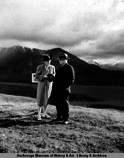 U.S. Interior Secretary Harold L. Ickes and Jane Dahlman Ickes in Mount McKinley National Park (later Denali National Park and Preserve), Alaska. 1938. Anchorage Museum at Rasmuson Center, Ickes Collection.
U.S. Interior Secretary Harold L. Ickes and Jane Dahlman Ickes in Mount McKinley National Park (later Denali National Park and Preserve), Alaska. 1938. Anchorage Museum at Rasmuson Center, Ickes Collection.
Why did Alaska deny asylum to Jewish refugees during WWII?
Green & Gold News
University of Alaska Anchorage
April 30, 2014
Associate Professor Bill Myers threw out an idea for his senior seminar history majors last year. Did anyone want to dive in and take a look at Alaska’s WWII history, in particular the territory’s refusal to grant asylum to Jewish refugees? It’s one element of U.S. history that hasn’t seen a lot of scholarship. Jordan Norquist, a senior double-majoring in history and German and minoring in psychology, was up for the challenge. Bonus: she could read primary source documents in both English and German. Her final paper, "Charity Begins at Home: How Public Opinion Denied Jewish Refugees Asylum in Alaska," was selected for feature in this year’s Student Showcase. Her research also made her eligible for the Patricia James Memorial Scholarship, which she applied for and won. Read more
Ruth Weber left Europe in 1941 to join Yule Kilcher in Alaska, a Swiss immigrant (Jewel's grandparents)
Ruth Webber was 21 when she left Europe in 1941 to join Yule Kilcher in Alaska, a Swiss immigrant. She later became matriarch of a musical family that includes the pop star Jewel. The following is from Jewel's website:
Ruth was an aspiring opera singer who left pre-war Germany, got on a ship headed to Alaska to marry a man she hardly knew because she felt her future children must be born somewhere free.
She married Yule Kilcher, who was a young idealist who hiked across the Alaskan glaciers by foot, with a ladder on his back, which he used to bridge crevasses in the ice so he could walk over them. He was looking for adventure and new land, away from the Nazi movement. Alaska was still not a state in the late 40's, so he was given (as all takers were) 600 acres of land for free if he promised to homestead it. He sent word back to his homeland of Switzerland, where many friends expressed wanting to move, that he had found a good piece of land. But none came, except Ruth.
Voyage of the Damned, MS St. Louis - 1939
MS St. Louis
Wikipedia
The MS St. Louis was a German ocean liner most notable for a single voyage in 1939, in which her captain, Gustav Schröder, tried to find homes for 908 Jewish refugees from Germany, after they were denied entry to Cuba, the United States and Canada, until finally accepted in various European countries, which were later engulfed in World War II. Historians have estimated that, after their return to Europe, approximately a quarter of the ship's passengers died in concentration camps. The event was the subject of a 1974 book, Voyage of the Damned, by Gordon Thomas and Max Morgan-Witts. It was adapted for a 1976 American film of the same title. Read more
Voyage of the Damned
Wikipedia
Voyage of the Damned is a 1976 drama film, which was based on a 1974 book written by Gordon Thomas and Max Morgan-Witts with the same title.[1]
The story was inspired by true events concerning the fate of the MS St. Louis ocean liner carrying Jewish refugees from Germany to Cuba in 1939.
Plot
Based on actual events, this film tells the story of the 1939 voyage of the MS St. Louis, which departed from Hamburg carrying 937 Jews from Germany, ostensibly to Havana, Cuba. The passengers, having seen and suffered rising anti-Semitism in Germany, realised this might be their only chance to escape. The film details the emotional journey of the passengers who gradually become aware that their passage was planned as an exercise in propaganda, and that it had never been intended that they disembark in Cuba. Rather, they were to be set up as Pariahs, to set an example before the world. As a Nazi official states in the film, when the whole world has refused to accept them as refugees, no country can blame Germany for the fate of the Jews.
The Cuban Government refuses entry to the passengers, and as the liner waits off the Florida coast, they learn that the United States also has rejected them, leaving the ship no choice but to return to Europe. The captain tells a confidante that he has received a letter signed by 200 passengers saying they will join hands and jump into the sea rather than return to Germany. He states his intention to run the liner aground on a reef off the southern coast of England.
Shortly before the film's end, it is revealed that the governments of Belgium, France, the Netherlands, and the United Kingdom have each agreed to accept a share of the passengers as refugees. As they cheer and clap at the news, footnotes disclose the fates of some of the main characters, suggesting that more than 600 of the 937 passengers who did not make it to the UK ultimately lost their lives in Nazi concentration camps. Read more
A Teacher's Guide To The Holocaust
Produced by the Florida Center for Instructional Technology,
College of Education, University of South Florida
Approximately 11 million people were killed because of Nazi genocidal policy. It was the explicit aim of Hitler's regime to create a European world both dominated and
populated by the "Aryan" race. The Nazi machinery was dedicated to eradicating millions of people it deemed undesirable. Some people were undesirable by Nazi standards because of who they were,their
genetic or cultural origins, or health conditions. These included Jews, Gypsies, Poles and other Slavs, and people with physical or mental disabilities. Others were Nazi victims because of what they
did. These victims of the Nazi regime included Jehovah's Witnesses, homosexuals, the dissenting clergy, Communists, Socialists, asocials, and other political enemies. Read more
Jewish Virtual Library
Of the 11 million people killed during the Holocaust, six million were Polish citizens. Three million were Polish Jews and another three million were Polish Christians and Catholics. Most of the remaining mortal victims were from other countries including Hungary, Czechoslovakia, Ukraine, Russia, Holland, France and even Germany. Read more
Some scholars maintain that the definition of the Holocaust should also include the Nazis' systematic murder of millions of people in other groups, including ethnic Poles, Romani, Soviet civilians, Soviet prisoners of war, people with disabilities, homosexuals, Jehovah's Witnesses, and other political and religious opponents. By this definition, the total number of Holocaust victims would be between 11 million and 17 million people. Holocaust victims, Wikipedia
McFarland Publishing website
Poland’s Holocaust
Tadeusz Piotrowski, Author
Ethnic Strife, Collaboration with Occupying Forces and Genocide in the Second Republic, 1918–1947
About the Book
With the end of World War I, a new Republic of Poland emerged on the maps of Europe, made up of some of the territory from the first Polish Republic, including Wolyn and
Wilno, and significant parts of Belarus, Upper Silesia, Eastern Galicia, and East Prussia. The resulting conglomeration of ethnic groups left many substantial minorities wanting
independence.
The approach of World War II provided the minorities’ leaders a new opportunity in their nationalist movements, and many sided with one or the other of Poland’s two enemies—the Soviet Union and Nazi Germany—in hopes of achieving their goals at the expense of Poland and its people. Based on primary and secondary sources in numerous languages (including Polish, German, Ukrainian, Belorussian, Russian and English), this work examines the roles of the ethnic minorities in the collapse of the Republic and in the atrocities that occurred under the occupying troops. The Polish government’s response to mounting ethnic tensions in the prewar era and its conduct of the war effort are also examined.
About the Author(s)
Tadeusz Piotrowski is a professor of sociology at the University of New Hampshire in Manchester where he also teaches courses in anthropology and the Holocaust, and where
he served as the Associate Dean of Faculty. He has received many awards including the Outstanding Associate Professor Award. He lives in Manchester.
Book review by Jessica Jager
UCSB Holocaust Oral History Project web site
________________________________________________________
Also see, The Holocaust in Poland, Wikipedia
_______________________________________________________

